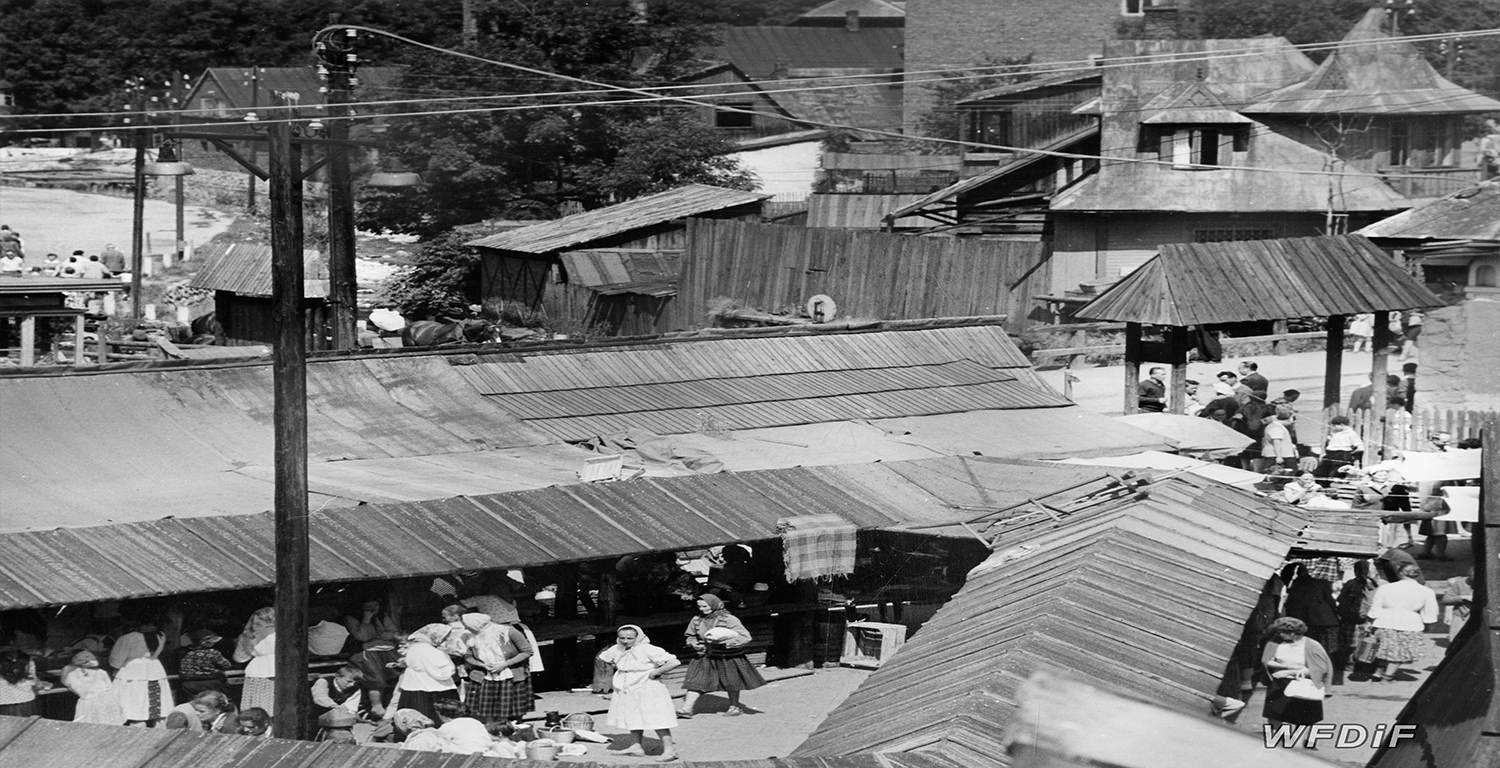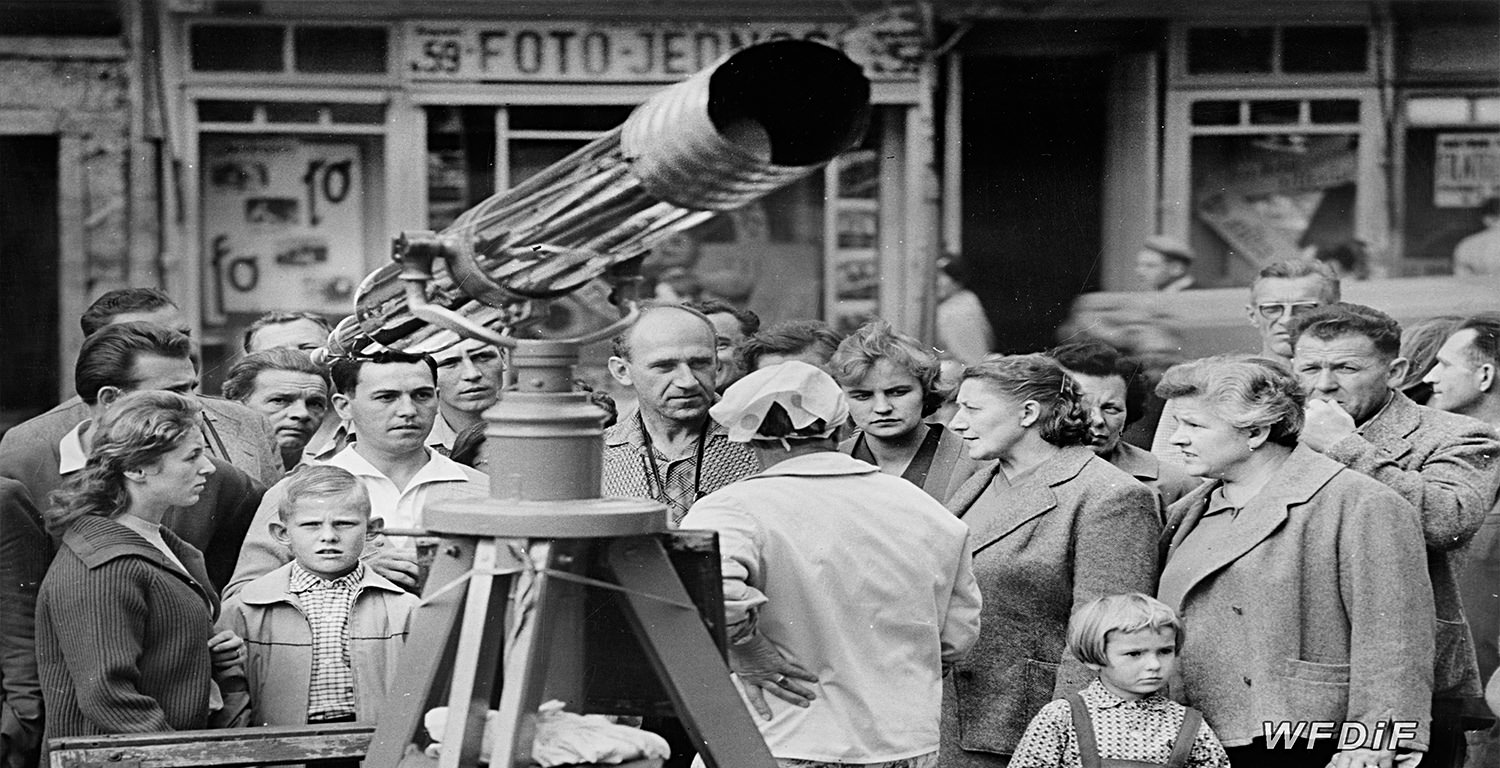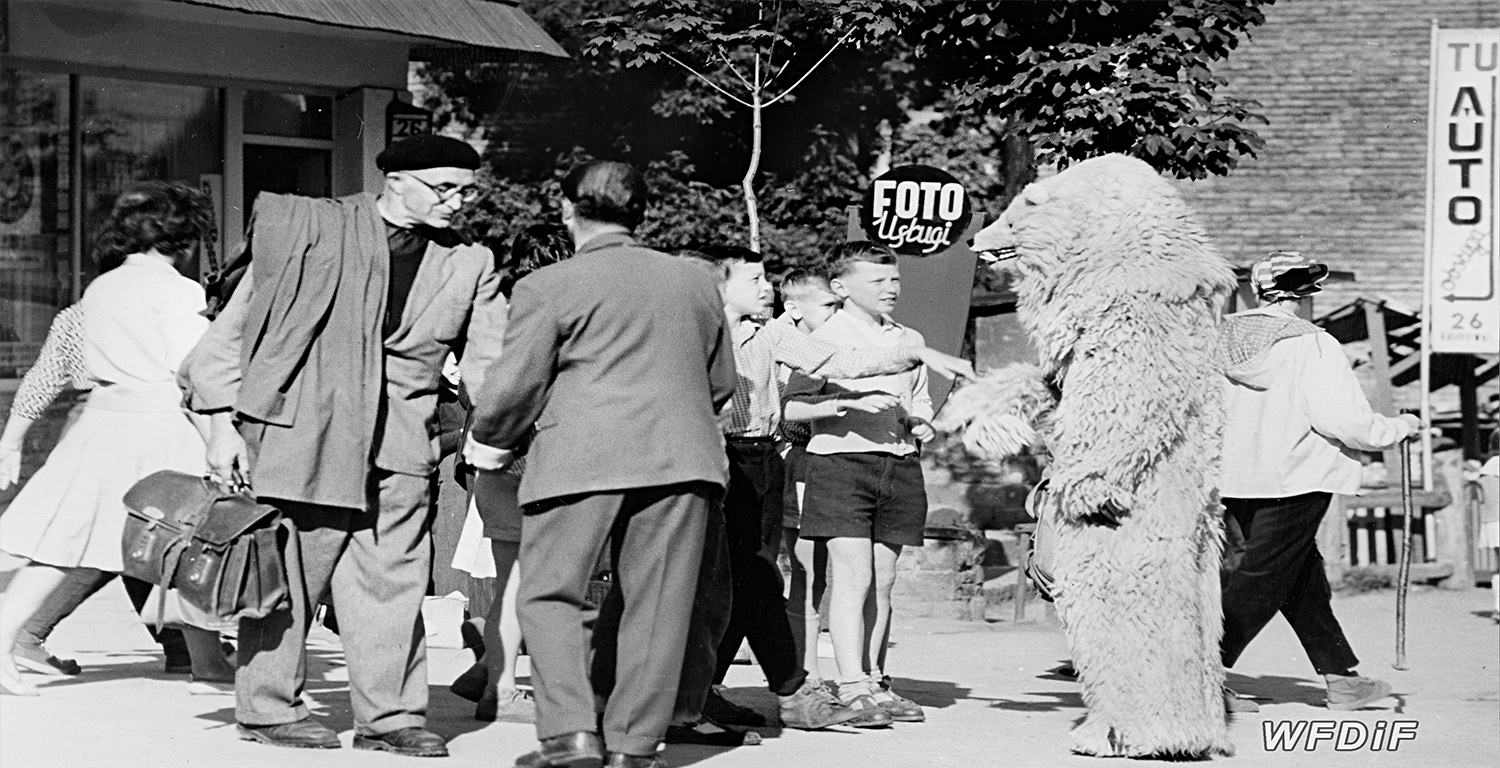An almost ten-minute long edit of observational shots, this documentary chronicles the results of urbanisation in the Tatras. It opens with footage showing international tourists, motorcycles and buses in the most famous Polish mountain resort of Zakopane to quickly convey a critical message. After a few moments of initial silence, the narrator offers a spoken caption to the pictures: ‘A cocktail of sweat and clouds of exhaust’.
The sarcastic tone builds throughout the rest of the film. We watch bars and coffee shops on Krupówki—the town’s commercial high street—where the sight of the nearby national park disappears behind the crowds. The narrator again reinforces an impression that the tourist industry has turned the nature reserve into a consumer fair where instead of the mountains people take photographs of humans dressed as bears. ‘And mountains? No problem. You can see them just for two zlotys’, says the narrator when we see a group gathered around a telescope.
Kwiatkowska’s criticism doesn’t only target the holidaymakers and the tourist industry. In the second half, the film offers glimpses of the landscape around the Tatras; they are no longer visible behind tower blocks, factories and massive construction site lifts.
The camera then changes the location to show the nearby town of Nowy Targ that in contrast to the vibrant Zakopane looks poor and neglected. We learn that because of the distance from the Tatra National Park, this should be the hub of industrialisation in the region. Instead of planning the urbanisation to suit the needs of local people and the green agenda, the government allowed for degradation of both the environment in Zakopane and the infrastructure in Nowy Targ.
Although Kwiatkowska never mentions who is to blame for this situation, the sarcasm of the commentator and the juxtaposition of the two towns send a rather clear message for all Polish citizens who are familiar with the operations of the national economy under Communism.
Perhaps to lift the mood, the concluding few shots of the film expose a basic hostel and some huts high in the mountains that are ‘waiting for those who really want to have some restful time away from Zakopane, the capital of the county’. Even if this ending may seem to blur the film’s overall message, it balances the views on tourism and industrialisation in Poland in the early 1960s, and it softens the impression that central planning failed both the people and nature in the country.
If here the hints of political criticism are only subtle and allusive, Zakopane ’61 still stands out as one of the rare exceptions in Kwiatkowska’s output, where her social observations couldn’t break free from the politics.
 RETURN TO Maria Kwiatkowska Zakopane ’61
RETURN TO Maria Kwiatkowska Zakopane ’61 Read More
Read More View images
View images More films
More films



